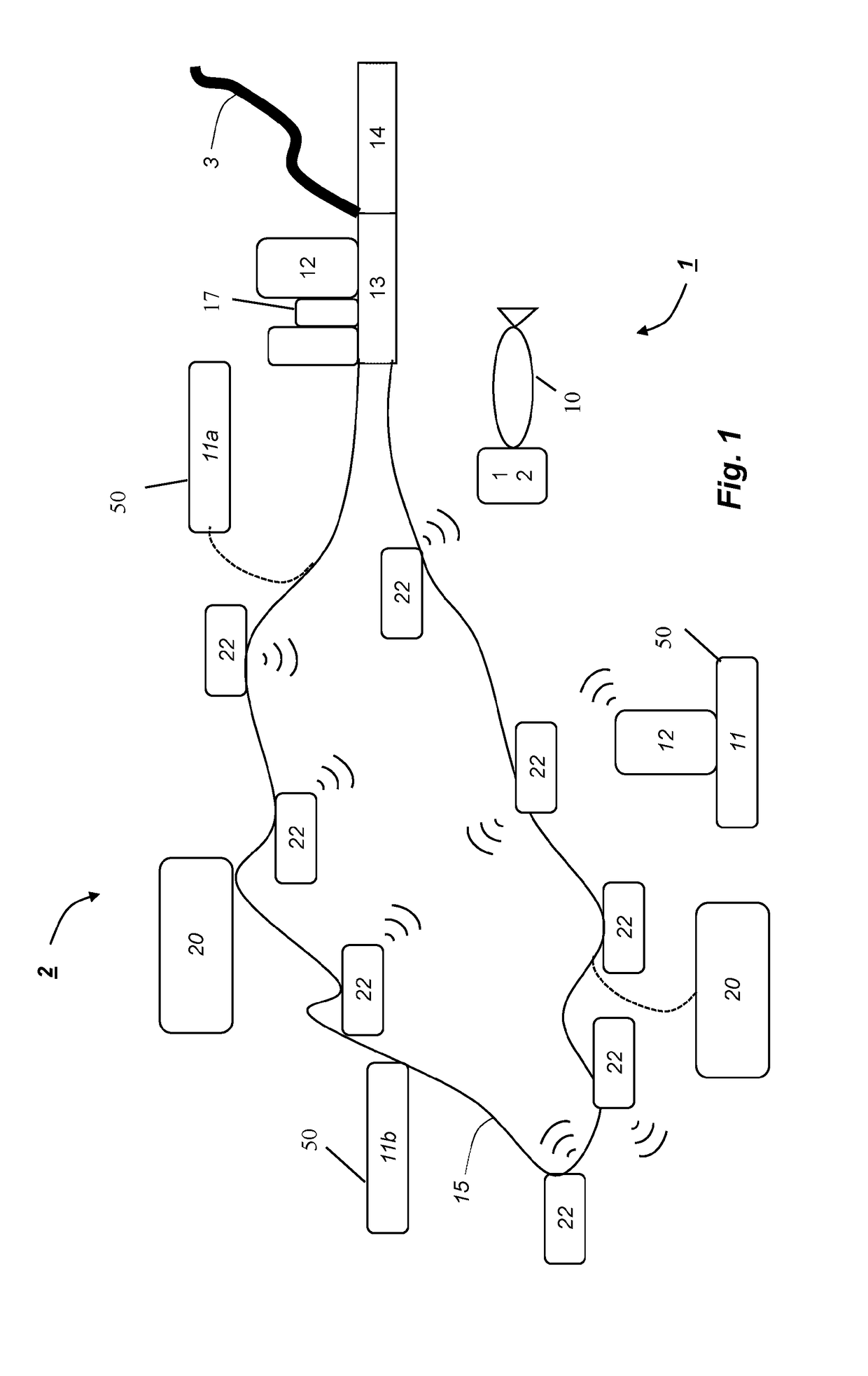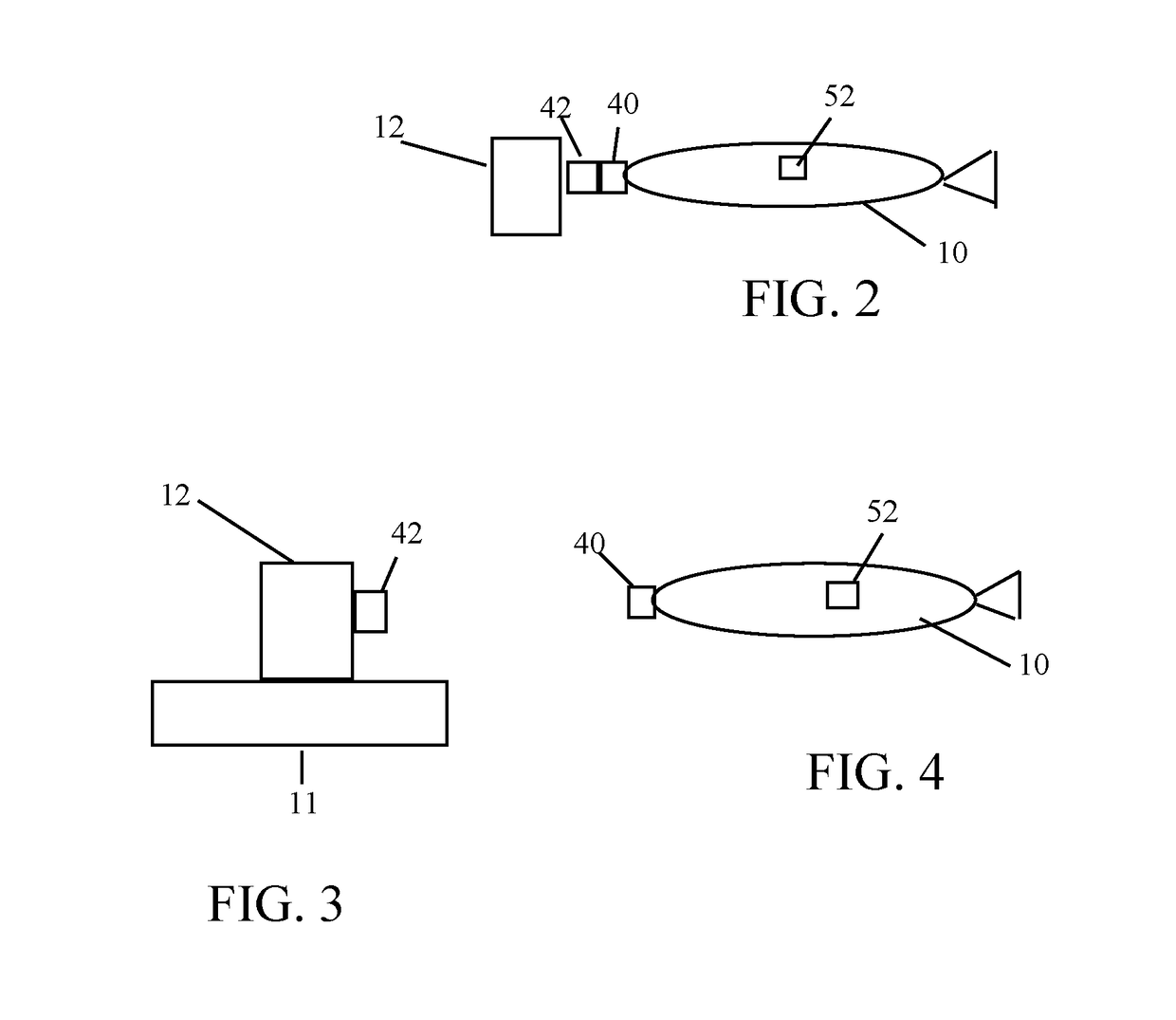System and method for operating a subsea sensor field
a sensor field and subsea technology, applied in underwater equipment, special-purpose vessels, instruments, etc., can solve the problems of affecting marine life, high cost of operation, and inability to collect data, so as to facilitate the autonomous operation of the auv, eliminate the need for communication links, and improve the effect of accuracy
- Summary
- Abstract
- Description
- Claims
- Application Information
AI Technical Summary
Benefits of technology
Problems solved by technology
Method used
Image
Examples
Embodiment Construction
[0047]FIG. 1 illustrates a sensor field 2 deployed on a seafloor, i.e. under a body of water. The sensor field 2 has permanent sources 20 and sensors 22 of various kinds as described in the introduction. The permanent sources 20 and sensors 22 are connected to a wired network 15, which provides electric power and / or communication links. The sensor field 2 could be designed differently than shown in FIG. 1, for example as a rectangular grid of synthetic ropes with an autonomous node at each intersection. The grid could be made of synthetic rope or steel wire for maintaining predetermined distances. Thus, a grid does not imply power supply or communication, but power and / or communication can be provided through a grid.
[0048]FIG. 2 illustrates the AUV 10 connected to the control unit 12 using the first transport connector 40 and the second transport connector 42.
[0049]FIG. 3 illustrates the control unit 12 connected to the base unit 11 and having a second transport connector 42.
[0050]F...
PUM
 Login to View More
Login to View More Abstract
Description
Claims
Application Information
 Login to View More
Login to View More - R&D
- Intellectual Property
- Life Sciences
- Materials
- Tech Scout
- Unparalleled Data Quality
- Higher Quality Content
- 60% Fewer Hallucinations
Browse by: Latest US Patents, China's latest patents, Technical Efficacy Thesaurus, Application Domain, Technology Topic, Popular Technical Reports.
© 2025 PatSnap. All rights reserved.Legal|Privacy policy|Modern Slavery Act Transparency Statement|Sitemap|About US| Contact US: help@patsnap.com


